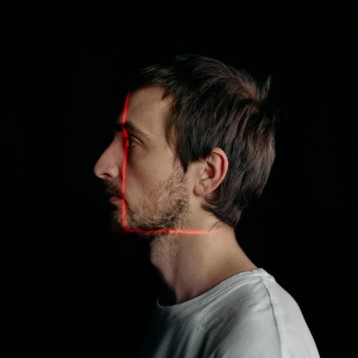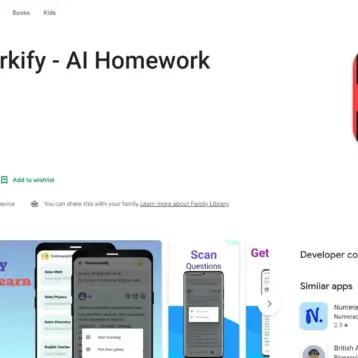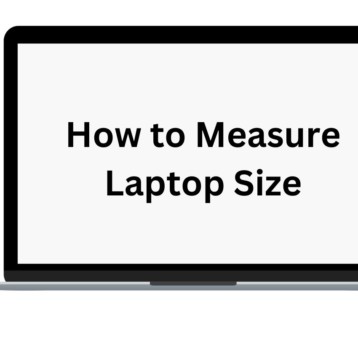Have you ever found yourself in a situation where you needed to extract text from an image but found it difficult and time-consuming to manually transcribe the text? This is where Optical Character Recognition (OCR) technology comes in.
OCR technology is used to convert scanned or digital images of text into machine-readable text. This technology is now being used in a variety of applications, from digitizing old books and newspapers to extracting data from invoices and receipts.
In this article, we will explore the process of transforming images into text using cutting-edge OCR technology, its benefits, applications, and future possibilities.
What is OCR Technology?

OCR technology is a form of Artificial intelligence (AI) that uses highly advanced algorithms to recognize and extract text from an image. There are two types of OCR technology. One is offline OCR, and the other is online OCR.
Offline OCR image text recognition is a technology that enables computers to recognize text from images without the need for an internet connection. Whereas online OCR, on the other hand, is a web-based OCR tool that is used to extract text from images online. An Online OCR tool is especially useful for small-scale projects or for occasional use.
Working of OCR Technology? And How Does it Extract Text from Images Online?
OCR technology works by using algorithms to recognize and extract text from an image. The OCR process typically involves the following steps:
Image Acquisition
Image acquisition is a crucial step in the working of OCR technology because OCR software relies on high-quality images with clear and sharp text to accurately extract and recognize patterns in the image that resemble text.
Any distortions or noise in the image can negatively impact the OCR software’s ability to accurately recognize the text patterns, making image acquisition an essential step for the success of the OCR process.
Pre-Processing
The image is then cleaned up and processed to enhance its quality and remove any noise or distortion.
This step involves removing any noise, distortion, or artifacts that may affect the accuracy of the OCR process. By improving the image quality, pre-processing ensures that the OCR software can accurately detect and segment text within the image, resulting in a more accurate and reliable output.
Text Detection
This step helps the OCR software to distinguish between text and other non-text elements in the image. Once the text areas are identified, the OCR software can then extract and recognize the text characters, leading to a more accurate output.
Character Recognition
The OCR software analyzes the text and recognizes each character. And then, the recognized characters are refined and checked for accuracy.
You have to keep one thing in your mind, the accuracy of the OCR process depends on several factors, such as the quality of the image, the typeface used in the image, and the complexity of the text.
Tools That Utilize OCR Technology
If you are looking for an online OCR tool that can help you extract text from images online, there are several options available. Some of the popular online OCR tools are:
Imagetotext.io
Imagetotext.io offers OCR Google functionality to extract text from image online. To use this freemium tool, import the image to the given box and then click on the “Submit” button. The tool will automatically scan the text in the image and give you the results.

OCR.Best
OCR.Best is a free online OCR tool that can extract text from images and transform them into editable text files. To use this tool, select the language, import the image in the given box, and then click the “Convert” button.

Benefits of OCR Technology
There are many benefits of using OCR technology to transform images into text. But here are some of the major benefits, which are:
Time Saving
OCR technology can extract text from images quickly and accurately, saving time and effort that would otherwise be spent manually transcribing the text.
Improved Accuracy
OCR technology can recognize and extract text with high accuracy, minimizing errors that can occur with manual transcription.
Cost-Effective
OCR technology is cost-effective compared to hiring a team of data entry professionals to transcribe the text manually.
Application of OCR Technology in Daily Life
Along with benefits, OCR also provides a wide range of applications in various industries or fields. Let us show you in which field OCR technology is applied and has been a successful
ü Use for Digitalizing Documents
Sometimes, we are very careless about our important documents and don’t care about them. And when we need them urgently, we can’t find them, which isn’t a good thing. So, in this scenario, OCR technology can be used to digitize old books, important documents, newspapers, and historical credentials, making them searchable and accessible online.
Use in Creating Invoices
Creating invoices can be a time-consuming and error-prone task, especially when doing it manually. It often involves a significant amount of data entry.
With the help of OCR, you can scan your invoices and automatically extract data from them, such as invoice numbers, dates, and line items. This reduces the risk of errors, speeds up the process, and improves overall efficiency.
Use for Business Automation
OCR technology also plays an important role in business automation. It provides a fast ad efficient way to digitize and extract data from physical documents.
OCR can also help businesses to integrate with other systems and software, such as Customer Relationship Management (CRM) or Enterprise Resource Planning (ERP), to further streamline the workflow and automate tasks.
End Lines
In conclusion, OCR technology is a powerful tool that can be used to transform images into machine-readable text. With online OCR tools, it’s now easier than ever to extract text from images online.
The benefits of using OCR technology are numerous, including improved accuracy, time-saving, and cost-effectiveness. While there are still some challenges to be addressed, the future of OCR technology looks bright.










